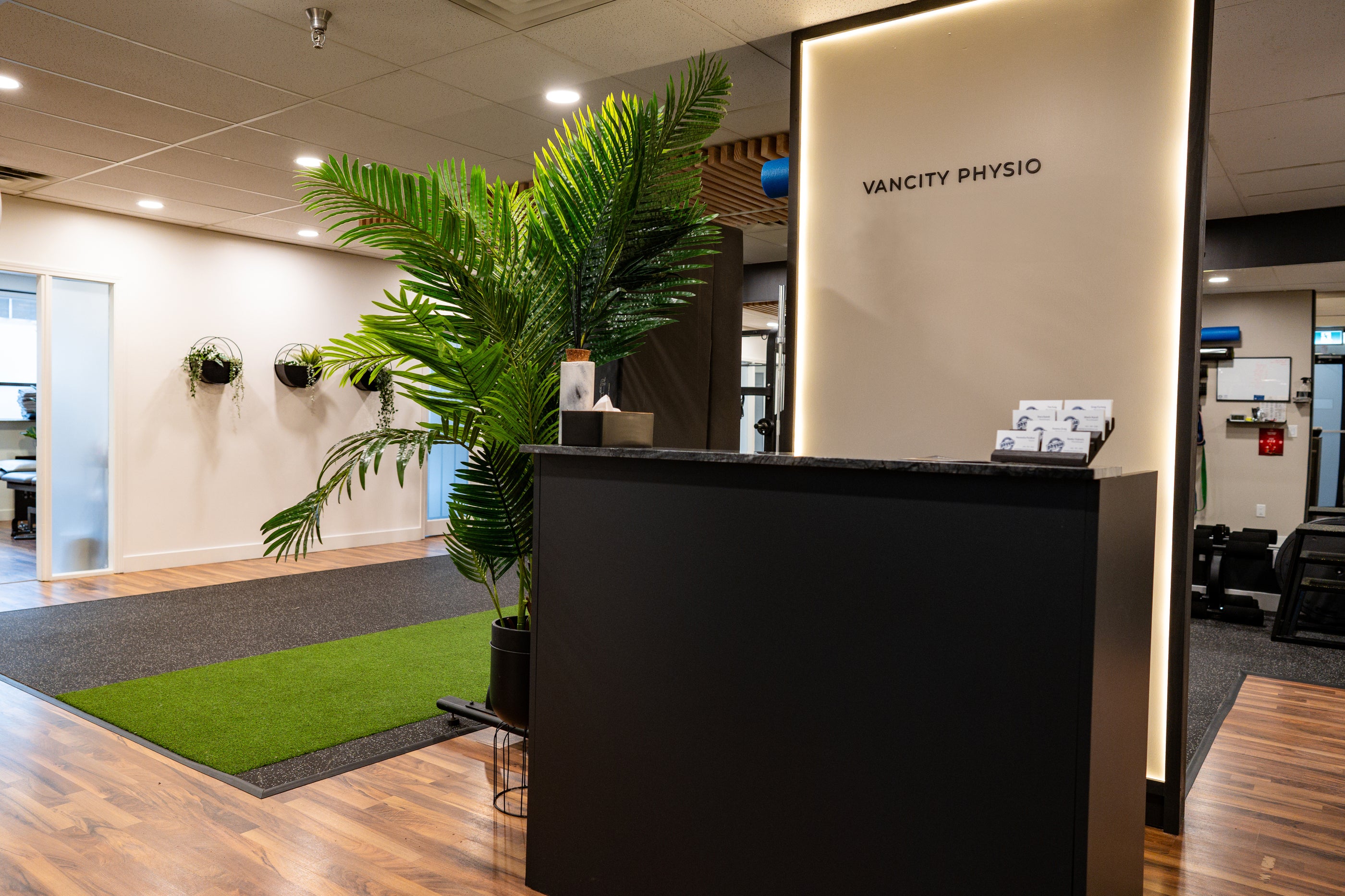A pulled back muscle usually begins as a sudden, sharp pain when lifting or bending. Or it may appear gradually, getting progressively worse over several days. This injury, that occurs in all age groups, ranges from a minor inconvenience to an intense source of pain. It can take several weeks, and in some cases a few months, to heal.
A pulled muscle is the common term for a strained muscle. A strain is a muscle or tendon injury that happens when the tissue stretches or tears. When a ligament stretches or tears, it’s called a sprain. Back pain, often due to a pulled muscle, is one of the most common issues health professionals treat. In most cases, you can manage and treat symptoms at home. But if the pain is unbearable or makes it difficult to move, come see one of our Physios at VanCity Physio to help optimize your healing and get you feeling better, faster.
Symptoms of a Pulled Back Muscle
Symptoms of a pulled back muscle depend on where the injury is. The spine is divided into three major sections: the neck, upper back and shoulders, and lower back.
For a pulled muscle in the neck, you might experience:
- Pain in the neck and upper back area
- Limited range of motion in the neck
- Stiffness in the neck
- Pain radiating to the shoulders or arms
- Headache
Pulled muscles in the shoulders and upper back may cause:
- Pain in the area between the spine and shoulder blade
- Muscle spasms in the upper back
- Knots and tightness in the upper back and shoulders
- Pain when moving the shoulders
In lower back strain injuries, many people experience symptoms such as:3
- Aching and stiffness in lower back muscles
- Pain that worsens with movement
- Pain that radiates to the hips and legs
- Limited range of motion
- Muscle spasms in lower back area
- Pain when sitting, standing, or walking
Causes and Diagnosis of a Pulled Back Muscle
Trauma, stress, and tension may all cause strains and sprains. Some of the most common causes include:
- Falling, especially if you hit the ground hard or fall in an awkward position.
- Repetitive movements that stress and irritate the back muscles.
- Unsafe lifting, lifting while twisting, or lifting a very heavy object. Parents sometimes injure their backs throwing or playing with children.
- Excess weight that puts excess strain on back muscles. People who are overweight, people who suddenly gain weight, and pregnant women are more vulnerable to pulled muscles.
- A sedentary lifestyle. This may weaken the back, increasing the risk of injuries.
- Poor posture when sitting or bad form when doing athletic activities.
A medical professional may suspect a strain or sprain based on symptoms and your medical history. If another injury, such as a broken bone or herniated disc, is possible, the provider may do other tests, such as an x-ray or MRI scan.
Treating a Pulled Back Muscle (5+1)
No matter where a pulled muscle is in the body, the steps to treat it are generally the same. However, it’s important to talk to a medical professional before treating an injury because symptoms of other injuries, such as disc problems or a broken bone, may resemble strains and sprains. After talking to a professional, try the following steps:3
- Protect/Rest. Right after a muscle strain, it is important to limit your activity level and avoid movements that increase pain. After the initial pain subsides, returning to the previous level of activity may help prevent the muscles from growing weak.
- Soft Tissue/Trigger Point Release. You can further increase blood flow to the injured tissues with a light massage. Our VanCity Physios accomplish this both by manual therapy techniques and using modalities such as ShockWave therapy, the latest and greatest in releasing tight and dysfunctional muscles
- Heat. After the first few days, alternating cold therapy with the application of heat may help reduce pain and increase circulation. Duration, frequency, and intensity of heat will vary from condition to condition, so be sure to come see us at VanCity Physio for advice best fitted for your condition.
- Perform strength exercises. As the pain subsides, try adding strengthening exercises in addition to stretching. Allowing the muscles to weaken with too much rest may actually slow recovery and increase the chances of future injuries. Physios at VanCity Physio will tailor make an exercise program that is best suited for you, optimizing your recovery to the greatest degree possible.
- Stretch. Gentle stretching exercises may improve tissue healing by bringing more blood flow to the injured area. Applying heat to the area prior to stretching may also be beneficial. Ask a doctor about the right stretches for your condition.
- Pain medication. Pain medications do not assist with the healing process and should only be used, in the short term, to provide relief with normal activities of daily living. If you feel that you need pain medication, consult with your physician to determine the type and dosage that is appropriate for your specific situation. Use medication sparingly because pain is actually an important indicator throughout the recovery process.
For strains in lower back muscles, treatment might also include light, low-impact exercise to help maintain range of motion and build muscle strength. Walking, cycling, and swimming are some good options for staying active while recovering from lower back muscle strains.
Come see us at VanCity Physio for the right exercises that are tailor made just for you.
Book a consultation today: https://vancityphysio.janeapp.com/
Follow us on Instagram for more information: VanCity Physio (@vancityphysiotherapy)

